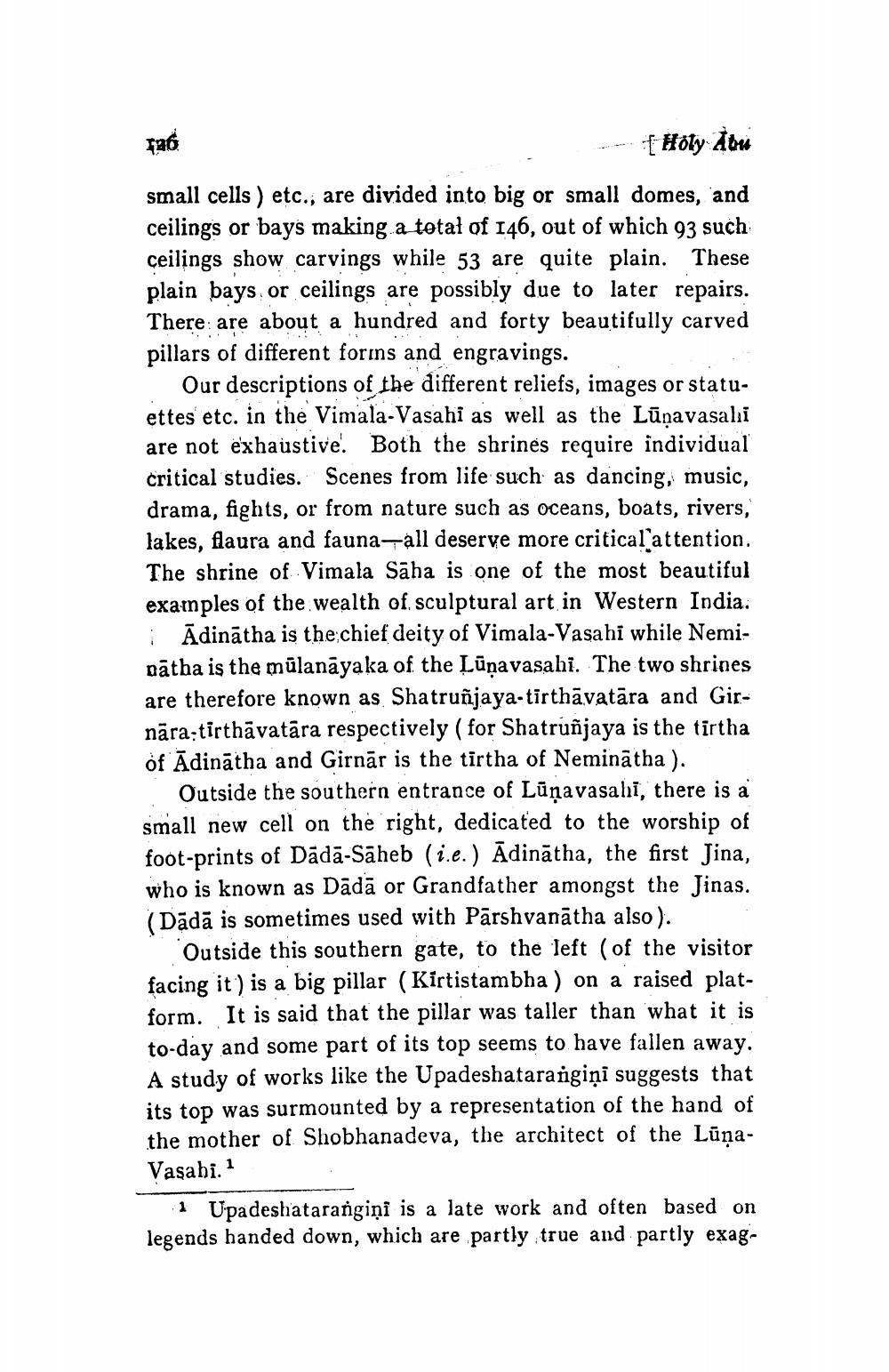________________
Iao
Holy Abu
small cells) etc., are divided into big or small domes, and ceilings or bays making a total of 146, out of which 93 such ceilings show carvings while 53 are quite plain. These plain bays or ceilings are possibly due to later repairs. There are about a hundred and forty beautifully carved pillars of different forms and engravings.
Our descriptions of the different reliefs, images or statuettes etc. in the Vimala-Vasahi as well as the Lūņavasali are not exhaustive. Both the shrines require individual critical studies. Scenes from life such as dancing, music, drama, fights, or from nature such as oceans, boats, rivers, lakes, flaura and fauna all deserve more critical attention. The shrine of Vimala Saha is one of the most beautiful examples of the wealth of sculptural art in Western India.
Adinatha is the chief deity of Vimala-Vasahi while Neminatha is the mulanayaka of the Lunavasahi. The two shrines are therefore known as Shatruñjaya- tirthavatāra and Girnāra tirthāvatāra respectively (for Shatruñjaya is the tirtha of Adinatha and Girnar is the tirtha of Neminatha).
Outside the southern entrance of Lunavasahi, there is a small new cell on the right, dedicated to the worship of foot-prints of Dādā-Saheb (i.e.) Adinatha, the first Jina, who is known as Dādā or Grandfather amongst the Jinas. (Dadā is sometimes used with Parshvanatha also).
Outside this southern gate, to the left (of the visitor facing it) is a big pillar (Kirtistambha) on a raised platform. It is said that the pillar was taller than what it is to-day and some part of its top seems to have fallen away. A study of works like the Upadeshatarangini suggests that its top was surmounted by a representation of the hand of the mother of Shobhanadeva, the architect of the LunaVasabi. 1
1 Upadeshatarangini is a late work and often based on legends handed down, which are partly true and partly exag




